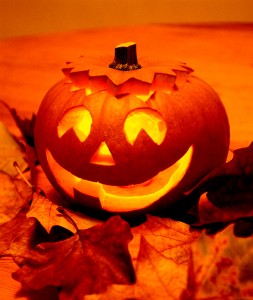
Arboretum Naturalist Bob Dunlap to deliver a Halloween creature lecture in spirit of the season
For anyone interested in some of the myths associated with Halloween, Arboretum Naturalist and Nobel Hall Greenhouse Manager, Bob Dunlap will be hosting a lecture about Halloween creatures and their myths as a part of the Continuing Education Program at Gustavus.
“This year we’re doing mostly nature oriented classes, so this month we’re looking at why certain animals are represented the way they are and the cultures that the myths came from,” Dunlap said. “Sort of like Discovery Channel’s ‘Shark Week,’ in the sense that this presentation is meant to inform anyone who is interested about why certain animals have been negatively stigmatized and where those assumptions originated.”
In preparing for this lecture, Dunlap mentioned that the bulk of his research was done online, mostly from government websites that report annual statistics of animal attack fatalities, proving that the occurrence of these attacks are not nearly as common as most people think.
This event is open for students as well as the public to attend on Thursday, October 29 from 7:00 p.m. to 8:00 p.m. in the Melva Lind Interpretive Center.
The Halloween holiday originated approximately 2,000 years ago as the pagan holiday of Samhain, celebrated by the Celtic people of what is now Ireland, England and northern France. It was believed that October 31 was a time when spirits would descend upon earth, causing mischief and damaging crops. People celebrated the holiday by wearing costumes and having large bonfires.
Centuries later, many other traditions have been added to the holiday that is Halloween, such as trick-or-treating and carving pumpkins. The idea of wearing a costume, and in a sense becoming something you’re not, is still a very popular component of this holiday.
“It’s a fun holiday because you get to dress up and be what you want to be,” Junior Communications Studies Major John Rasmussen said.
Junior Nursing Major Lillia Benson agreed. “I love Halloween, especially in college, because I can make a complete fool out of myself, and no one will recognize me the day after. I can embrace an alter ego and no one can judge me,” Benson said.
However popular Halloween may be, some students feel that once you reach a certain age, this holiday begins to lose its appeal. “I don’t like Halloween. I liked it when I was five,” Senior Accounting Major Kaitlin Braun said.
Lyra Anderson, a first year student, also has a similar opinion on Halloween, “I hate Halloween. First of all it is way overrated. I just outgrew Halloween.”
Whether you love it or hate it, Halloween will continue to be celebrated in our culture for centuries to come.